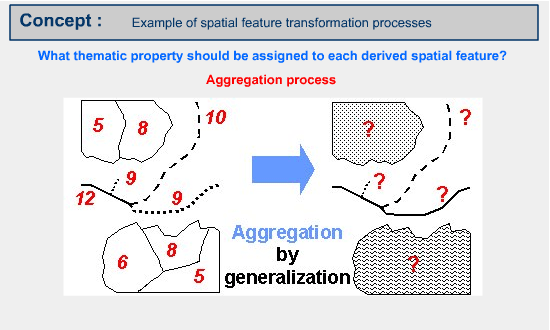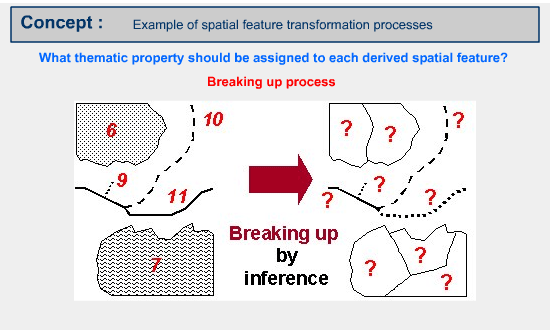|
|
Transformation of spatial features
This unit will introduce how to aggregate the spatial features on the basis of spatial and/or thematic properties. Such as, aggregating the spatial features such as the dryland agriculture, wetland agriculture and mixed agriculture to agriculture, based on the thematic properties. Moreover, this unit will also introduce how to disintegrate or break up the spatial features according to spatial and/or thematic criteria; such as allocating a forest area within 200 meter from the drainages as riparian vegetation protection forests. The existing spatial features that are represented as forest will be broken up according to the aforementioned criteria. The process of spatial aggregation and spatial breaking up can be carried out using spatial analysis and overlay functions. Therefore, the process will not be repeatedly illustrated in this unit.
 Example 1 of a spatial feature transformation process
Example 1 of a spatial feature transformation process Example 2 of a spatial feature transformation process
Example 2 of a spatial feature transformation processDownload the PDF version of the graphic and animation presentation of this unit.
